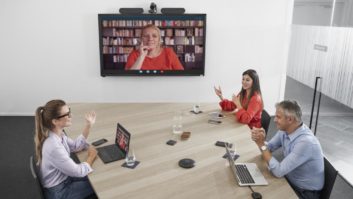 Hybrid working has become the norm for many knowledge workers around the world and, in most instances, it has helped to boost productivity, improve work-life balance and give employees more control over how they work. In fact, 51% of employees currently hybrid working would consider leaving their company if this was removed.
Hybrid working has become the norm for many knowledge workers around the world and, in most instances, it has helped to boost productivity, improve work-life balance and give employees more control over how they work. In fact, 51% of employees currently hybrid working would consider leaving their company if this was removed.
However, remote work has also created new challenges for IT teams. As employees work at home, there has been an uptick in IT support tickets, as well as the need to equip all workers with the right kit to work effectively when away from the office. Perhaps most significantly, when employees work remotely, IT teams have far less visibility into the tech issues people are having, how to troubleshoot and solve them.
Before the pandemic, IT teams could easily oversee how technology was being used in the office, from meeting room occupancy to which devices weren’t working. As hybrid working is set to continue for the long term, this kind of insight is now needed for remote workspaces too. If IT teams can push firmware updates and enable new features, for example, to distributed teams across multiple platforms, it will reduce potential issues before they become an IT burden and help keep everyone working productively.
INCREASED DEMAND
Moving to a remote or hybrid model was a first for many employees and has required them to rapidly adapt to new ways of working. Without the IT team close by, and with some employees navigating new technologies like video conferencing platforms and shared documents for the first time, IT teams have been stretched much further. Addressing any technical issues is critical in order for employees to be able to work and collaborate without disrupting their productivity, and is consequently putting pressure on IT.
IT teams have also faced the challenge of making sure there is no disconnect between in-office and remote devices. Admin and maintenance of both in-office meeting rooms and home working set-ups has been key – for example, making sure firmware updates can be rolled out across the whole suite of devices, to ensure continued compatibility.
While the demand for support has gone up for all of these reasons, the visibility around issues remote employees are having has decreased. While device and room management within the office is common for IT teams, many companies are not yet equipped with remote access software – with 1 in 6 not monitoring the remote worker experience at all. As a result, IT teams have a limited capacity for troubleshooting before an issue is raised by an employee – once it is likely already impacting on productivity.
PRESSURE RELIEF
With the implementation of remote device management software, the pressure facing IT teams will be eased. For example, the large number of support tickets that relate to out-of-date software can be fixed by remotely pushing firmware updates on remote workers’ personal collaboration devices. While employees may avoid installing these essential patches as they ‘don’t want to deal with them’, if IT teams can patch the problems before they become trouble tickets, they can ensure a secure and productive workforce.
As hybrid working models continue to develop, it has come to expand device management and monitoring to include remote devices. Being able to support devices including personal webcams, headsets and remote docking stations will allow IT teams not just to troubleshoot more effectively, but to solve issues for remote workers before they cause disruption.
The hybrid model is becoming a permanent model for many industries and knowledge workers, and the demand for technical support for remote workers is set to stay. Remote device management now needs to expand to encompass the rapidly growing remote workforce and the technical issues they may bring, in order to keep teams working productively wherever they are.







